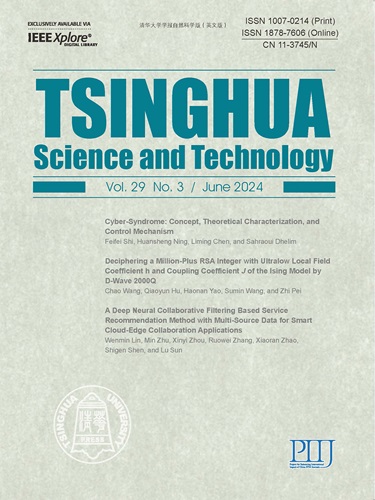Role Identification Based Method for Cyberbullying Analysis in Social Edge Computing
IF 3.5
1区 计算机科学
Q1 Multidisciplinary
引用次数: 0
Abstract
Over the past few years, many efforts have been dedicated to studying cyberbullying in social edge computing devices, and most of them focus on three roles: victims, perpetrators, and bystanders. If we want to obtain a deep insight into the formation, evolution, and intervention of cyberbullying in devices at the edge of the Internet, it is necessary to explore more fine-grained roles. This paper presents a multi-level method for role feature modeling and proposes a differential evolution-assisted K-means (DEK) method to identify diverse roles. Our work aims to provide a role identification scheme for cyberbullying scenarios for social edge computing environments to alleviate the general safety issues that cyberbullying brings. The experiments on ten real-world datasets obtained from Weibo and five public datasets show that the proposed DEK outperforms the existing approaches on the method level. After clustering, we obtain nine roles and analyze the characteristics of each role and their evolution trends under different cyberbullying scenarios. Our work in this paper can be placed in devices at the edge of the Internet, leading to better real-time identification performance and adapting to the broad geographic location and high mobility of mobile devices.基于角色识别的社会边缘计算网络欺凌分析方法
在过去的几年里,人们致力于研究社交边缘计算设备中的网络欺凌,其中大多数集中在三个角色上:受害者、肇事者和旁观者。如果我们想要深入了解网络边缘设备中网络欺凌的形成、演变和干预,有必要探索更细粒度的角色。本文提出了一种多层次的角色特征建模方法,并提出了一种差分进化辅助K-means (DEK)方法来识别不同的角色。我们的工作旨在为社会边缘计算环境下的网络欺凌场景提供角色识别方案,以缓解网络欺凌带来的一般安全问题。在微博上的10个真实数据集和5个公开数据集上的实验表明,本文提出的DEK方法在方法层面上优于现有方法。聚类后,我们得到了9个角色,并分析了每个角色在不同网络欺凌场景下的特征及其演变趋势。我们在本文中的工作可以放置在互联网边缘的设备中,从而获得更好的实时识别性能,并适应移动设备的广泛地理位置和高移动性。
本文章由计算机程序翻译,如有差异,请以英文原文为准。
求助全文
约1分钟内获得全文
求助全文
来源期刊

Tsinghua Science and Technology
COMPUTER SCIENCE, INFORMATION SYSTEMSCOMPU-COMPUTER SCIENCE, SOFTWARE ENGINEERING
CiteScore
10.20
自引率
10.60%
发文量
2340
期刊介绍:
Tsinghua Science and Technology (Tsinghua Sci Technol) started publication in 1996. It is an international academic journal sponsored by Tsinghua University and is published bimonthly. This journal aims at presenting the up-to-date scientific achievements in computer science, electronic engineering, and other IT fields. Contributions all over the world are welcome.
 求助内容:
求助内容: 应助结果提醒方式:
应助结果提醒方式:


